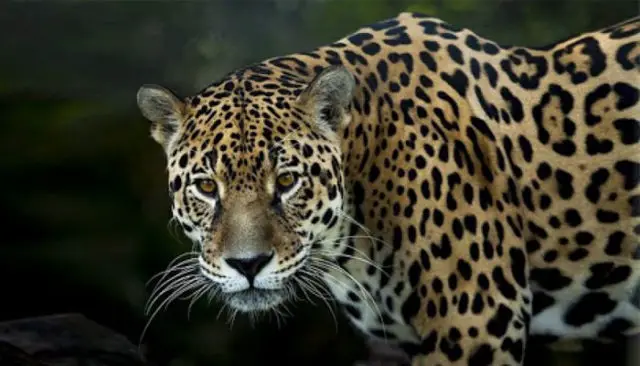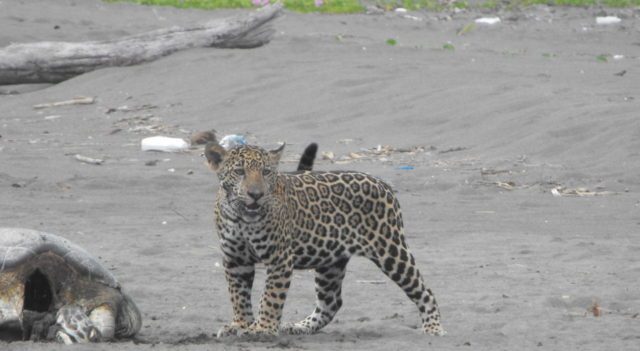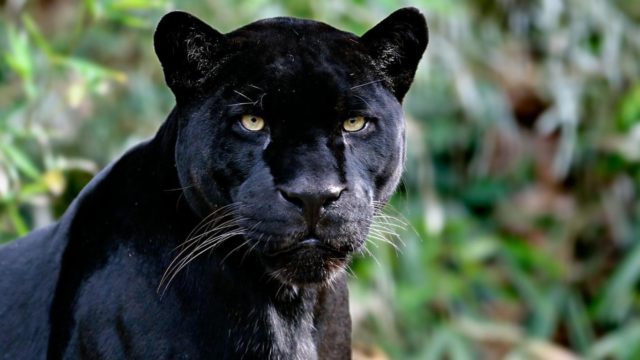
Increasingly frequent sightings of jaguars in Guanacaste point to a recovery. The jaguar, the largest carnivorous animal in Costa Rica, lost 46% of its original range due to deforestation
When the Guanacaste dry forest is healthy, jaguars act in sync with the rest of the ecosystem: they regulate other populations and even contribute to forest regeneration.
In the Guanacaste Conservation Area (ACG) deforestation and hunting greatly reduced their populations during the last century. Now, little by little, scientists are documenting their presence more.
This was explained by Víctor Montalvo, a researcher at the International Institute for Wildlife Conservation and Management (Icomvis) of the National University (UNA).
According to the researcher, jaguars are on the rise in the dry forest. “In 2010, to obtain a photo of a jaguar (with camera traps) you had to invest around 100 nights, for example. Now, we invest about 60 nights. It is easier to see a jaguar now than it was 10 years ago,” Montalvo said.

Despite its recovery, the populations of this species remain weak and it is still categorized as a “near threatened” species by the International Union for Conservation of Nature (IUCN).
The recovery of dry forest, however, has also favored the recovery of jaguars, according to Montalvo. Scientists monitor these populations through trap cameras. “Here the forest was restored. Once it was restored, the populations of other herbivorous species – such as saínos – began to recover as well.
When they recover, the jaguars that are present, have more resources to reproduce,” he explained. According to the researcher, the full recovery of these populations will take time: around 20 to 30 years. However, the trend is heading towards recovery.
“Unfortunately not in all protected areas it is the same. But, at least in the Guanacaste Conservation Area, I would dare to say that (the recovery of the populations) is going to be a reality in a few years,” said the biologist.
The jaguar (Panthera onca) is the largest carnivorous animal in Costa Rica and one of the native felines of America. In the region, recent studies indicated that the species lost 46% of its original range due to deforestation.
The Dry Forest
The Guanacaste forest played an important role in both the reduction and slight recovery shown by jaguar populations. Deforestation in this area was significant, according to Montalvo, because of two factors: the good quality of the dry forest wood, as well as to make way for agriculture and livestock.
“Dry forests have the particularity that throughout Central America they were cut down due to their precious woods, some of the best in the world. This caused that forest cover to be removed little by little,” said the expert.

Trapping jaguars images with cameras now requires less time investment, Montalvo explained. Some of these monitors, such as the Guanacaste Wildlife Monitoring systems, are published on social networks.
However, as they have noticed more presence of these predators, scientists have also noticed other peculiarities in the forest: jaguars began to regulate other populations. “When there are no large predators in an ecosystem, the pressure of herbivores on plant communities is too strong, producing that in the site the ground is uncovered. Predators regulate these populations (herbivores) and that allows the forest to be restored more easily,” explained Montalvo.
Within Protected Areas
Jaguar populations, however, are not yet large. An example of this is that, for the most part, individuals are only found within Protected Wilderness Areas, according to a 2018 camera trap study by the National System of Conservation Areas (Sinac).
“Jaguars are mostly present in Protected Wilderness Areas, which represents sites of great importance for their long-term survival and validate to a certain extent, the function and effectiveness of these areas in terms of the degree of protection,” the research found.
As a consequence, populations are fragmented and found in specific sites, such as the North Caribbean, North Pacific and South Pacific. Scientists now recommend creating connections between those areas to drive the increase in the interconnection of the feline populations of the country.
“Improvements in connectivity conditions within and between Focal Areas are key to obtaining a positive effect on the species. This would allow reaching rates of size and quality large enough to sustain ample populations of the species.

